|
Also called tapestry. Classic needlepoint in tent or cross stitch is a traditional needlework done on canvas. In past centuries, needlepoint upholstery covers were also very popular, and a rich tradition has been passed down, e.g. the Florentine Bargello.
 |
 |
Half cross stitch
or tent stitch |
Cross stitch |
 Bargello Bargello |
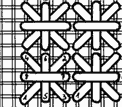 |
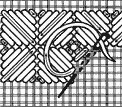 |
| Smyrna cross stitch |
Brighton stitch |
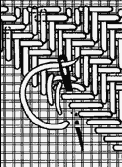 Diagonal fern stitch Diagonal fern stitch |
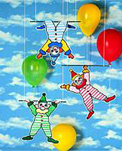 |
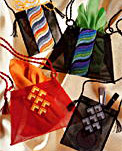 |
Needlework Ideas
9614/602 MAGIC CANVAS |
Needlework Ideas
9614/600 MAGIC CANVAS |
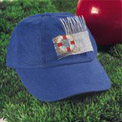
Needlework Ideas
510/601 Waste Canvas |
|
technique, to name just one. Needlepoint offers a tremendous scope of stitches and techniques, and special surface textures can be created with diverse filling and/or background stitches. The stitches should completely cover the canvas.
Canvas types:
There is plain mono canvas, double-mesh canvas and interlock mono canvas. All canvas types have a very open weave and stiff sizing. The type of canvas you select depends upon the intended use of the finished piece as well as the type of embroidery yarn or wool used.
Recommended canvases:
The most important tapestry canvas is 1231 and 1253 PENELOPE, a double-mesh, 10 or 12 holes per inch canvas works well with tapestry wool. 500 STRAMIN is available in the widest range of gauges, from 6 to 20. Available in 60 cm (24") width, this canvas is popular for cushions and smaller projects. All of the SUDAN-STRAMIN types 1210/185, 1201/210, 1204/240 are suitable for grospoint cross stitch. The number after the slash indicates the mesh gauge per metre. The mono canvas types 9281 ROYAL CANVAS or MONO de LUX and 9604 ZWEIGART-TWIST or INTERLOCK MONO canvas are best suited for Bargello and novelty background stitches, as they are available in several gauges. They have been and still are used by children for learning needlepoint and even for their first needlepoint projects.
Embroidery yarns and wools:
The weight or thickness used must always match the gauge of the canvas. Anchor Tapestry Wool is generally used on coarser canvas types. For finer tapestry there are Crewel wools and for fine canvases, even for petitpoint, divided embroidery floss can be used. Try out the yarns for background areas first on an extra piece of canvas. Many types can be used for this.
Special canvas types
9614 MAGIC CANVAS is an interlock mono canvas available in many colours. Because this canvas is coloured, one of the cardinal needlepoint rules can be ignored, i.e. the canvas need not be fully covered by embroidery, as the transparent open mesh has its own special effect.
MAGIC CANVAS is also suitable for traditional needlepoint. You just don't have to be quite so careful that every single bit of canvas is covered by embroidery.
WASTE CANVAS
is a tool that helps you embroider cross stitch motifs and patterns onto fabrics not suitable for counted embroidery. Cut out a piece of 510 14ct Waste Canvas somewhat larger than the motif and baste it onto a T-shirt or jeans, for example. Embroider through both layers. When finished, dampen the embroidery and pull out the canvas threads one at a time.
Needlework Ideas
Booklet 102 and 104 MAGIC CANVAS Christmas
Booklet 109 MAGIC CANVAS
Booklet 115 MAGIC CANVAS
510/601 Waste Canvas
|

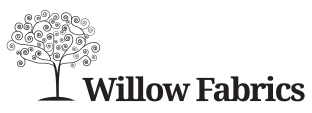


 Bargello
Bargello

 Diagonal fern stitch
Diagonal fern stitch

